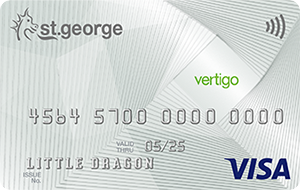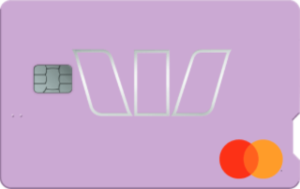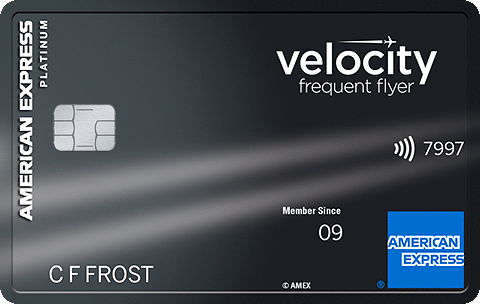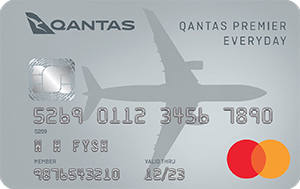
Hi, I’m a personal finance expert who loves to help you out! I’ll answer your question within a business day. Pinky swear.

In this article, we’re going to look more closely at Buy now pay later and everything it offers. From its benefits to its pitfalls, to how it compares to credit cards and other Fintech based apps like Pay on Demand. So, let’s start at the beginning.
Making use of Buy now pay later services is becoming increasingly common here in Australia. According to investment bank UBS, the Buy now pay later sector accounts for $7 billion (8%) of retail spending in Australia (excluding food), with forecasts suggesting that amount will nearly double to $12 billion in two years.
| The latest research shows that around 41% of Australian adults now have one or more Buy now pay later accounts, with 60% of users reporting having had their account for two years or less. This boom in popularity – alongside a reduction in credit card usage – suggest a shift away from credit cards towards Buy now pay later services. |
While Buy now pay later has its advantages, it’s not without its potential pitfalls. Regulators are watching these services closely as complaints rise regarding late fees and mounting debts, with calls being made to impose more stringent regulations on how they are accessed.
⚡ Update: As of June 10, 2025, new legislation has been enacted that will label Buy now pay later services as ‘low cost credit contracts’ under the National Consumer Credit Protection Act 2009. That means they will come under the same regulating body as other lines of credit, and BNPL services will need to perform credit checks on new customers.

What is Buy now pay later?
Just as the name suggests, buy now pay later services allow users to buy something they want now, to then pay for it later. That’s not new, we hear you say. No, it’s not. Buy now pay later schemes have been around for some time now: if you’ve ever seen ads offering ‘60 months interest free’ or ‘buy now and pay nothing for 12 months’, well, that’s BNPL.
Today, though, the market has evolved – and that’s mostly thanks to Afterpay. When Afterpay launched in 2015, it introduced a new way to access Buy now pay later. Appealing to a much younger market, Afterpay put Buy now pay later into the hands – or more importantly, into the devices – of users, offering a finance option that was easy to access and simple to use, with super fast approval.
The effect on the Buy now pay later was huge. According to the report ‘BNPL 2019: More Shoppers, More Players and More Options’ from Power Retail, the percentage of Australian online shoppers using Buy now pay later services has risen from over one quarter (27%) to over one third (39%) in the past year alone. As many as 10% now use Buy now pay later “whenever they can” when making online purchases.
In terms of what users are buying, most Buy now pay later purchases relate to fashion, at 52% of all transactions, while other popular transactions include electronics and electrical goods, house and garden products, and beauty items.
And value? It seems the value of goods bought using Buy now pay later has fallen since the introduction of Afterpay, from an average $1,098 in April 2016 to $155 in September 2019.
| Credit card brands bit back at Buy now pay later services with their own range of interest-free credit card products that work in much the same way but come with credit limits, fraud protection and other basic extras. |

How does Buy now pay later work?
How does it work then? Let’s look at Afterpay as an example first.
Say you’re shopping online and you see something you want to buy… but you don’t have the money to pay for it right now. If the retailer you’re looking to buy from accepts Afterpay, all you need to do is choose Afterpay as your payment method. You can then instantly create your Afterpay account and complete your purchase.
Shopping instore? Making sure the store you’re buying from accepts Afterpay, you simply download the Afterpay app and create your account. All you need to do then is scan your barcode at checkout and complete your purchase.
For each purchase you make using Afterpay, you will repay the total amount, making four equal payments each fortnight. There is no interest to pay, but you will be charged a late fee if you miss a payment. You can have multiple Afterpay purchases on the go at the same time, which you can track using the app.
While most Buy now pay later services work in much the same way as Afterpay, competitor Zip offers something slightly different. When you sign up for a Zip account, you are assigned a spending limit. Then, every time you make a purchase, Zip adds it to your account.
At the beginning of the month, Zip sends you a summary of your spending. You can choose to pay it all back at the end of the month, or pay over time making a minimum payment of at least $40. Again, there is no interest to pay when using Zip, but you will pay a monthly fee when you have a balance owing on your account.
How do you get approved?
When you’re at the checkout, you don’t want to mess around with time-consuming credit applications. You just want to pay and go. Which is why this new way of using Buy now pay later is so appealing. But, if services such as Afterpay offer instant approval, how do they know each user is going to be able to pay back the purchase?
This is one of the sticking points for many of Buy now pay later’s detractors. Opponents of the current set-up believe there is not enough regulation regarding the assessment of users’ ability to repay.

What does Afterpay have to say on the subject?
According to its website, Afterpay uses its “own specially developed technology to assess your ability to pay for the items you want”. It also has “some hard rules around who is eligible to join”.
These include:
- You must live in Australia
- You must be at least 18 years old
- You must have a valid and verifiable email address and mobile phone number
- You must use a valid Australia bank payment card to make a purchase
- You must be capable of entering into a legally binding contract
Afterpay also takes into account how responsible users are with their spending and repayments over time. For example, new users may need to make their first installment at the time of purchase, while proven users are given two weeks before their first installment is due. The amount users can cover on each purchase – and the total amount they owe – may also increase over time if they prove they are responsible.
Why use Buy now pay later?
Buy now pay later in its current form has become incredibly popular – and with all the benefits on offer, it’s easy to see why.
Quick and Easy
Signing up for Buy now pay later is both quick and easy. That’s one of the things that appeals most to its users. Whether you’re at the checkout online or instore, all you need to do is create an account and complete the purchase. Once you have created your account, paying for purchases in future becomes even faster.
Pay on ‘Credit’
Even if you don’t have the money to cover the cost of what you want to buy, you can use Buy now pay later to pay for it now, and then pay it off over time. This can work well if you don’t have money now but know you will get paid in a few days, or if you have an unexpected expense that you can’t cover upfront.
Spread the Cost
When you pay with Buy now pay later, each purchase you make becomes more manageable. Instead of shelling out a large upfront cost, you can break it up into easy, bite-sized payments. While many users choose to use Buy now pay later for smaller purchases, it can work well for larger transactions as well, such as dental costs, electronics and white goods.
Flexibility
While services such as Afterpay require equal fortnightly payments, other services such as Zip can offer more flexibility. Using Zip, you pay a monthly fee when you have a balance owing, and you have a minimum amount you have to pay back each month. You can choose to pay it all off if you want, or just the minimum if you need more time.
No Interest
Services such as Afterpay do not charge interest. For many users, this makes it a more appealing option than credit cards, which currently have an average interest rate of 17% p.a. It is worth pointing out though that Afterpay users who miss payments have to pay a late fee. This is capped at $68 per transaction.

What about drawbacks?
Now we know why so many users are drawn to Buy now pay later. But, is there more to the story? Let’s look beyond the advertised attractions of Buy now pay later services to see what potential it has for harm.
Users Overextending Themselves
While Afterpay claims to assess each user’s purchases before approval by looking at both their responsibility as a spender and how much they owe on other purchases, without a proper credit check being carried out, there is no way of knowing whether the user can actually afford to repay each transaction.
| According to the study mentioned previously, 25% of Buy now pay later users have three to five payments on the go at any time. Keeping track of that many payments can become overwhelming. There has also been anecdotal evidence of users with no income being allowed to keep spending, wracking up debts that they are unable to repay.
One option is to move your Buy now pay later debt to a credit card with a 0% interest balance transfer feature. That way, you can pay off your debt without paying interest. |
Unnecessary Spending
Who hasn’t spent time online, ‘window shopping’ for stuff they know they can’t afford? One of the dangerous things about Buy now pay later is the opportunity it provides users to spend simply because they can. One in four users surveyed admitted to regretting a Buy now pay later purchase – and the same number said they hid their purchases from friends, family and partners.
Not only that, half of all respondents reported spending more on Buy now pay later platforms than when they used their debit or credit cards. And, almost 60% said that being able to break payments into installments meant they bought things they wouldn’t have otherwise purchased if they’d had to pay it all upfront.

Snowballing Fees
The amount users pay in fees varies according to the service, and how they use it. As we mentioned earlier, Zip charges a $6 monthly fee to users who have a balance owing, and no fees to those who clear their balance.
With Afterpay, users only pay fees when they miss a payment. There is a $10 penalty for each missed payment, and then a further $7 late fee if that installment remains outstanding after one week. Users who miss all four installments are subject to a total late fee of $68 per transaction.
While these amounts may seem insignificant, they can add up, especially for users who get in over their head and have multiple purchases they can’t repay. This isn’t uncommon. According to the survey, one-third of respondents said they’d missed at least one repayment on their BNPL purchases, while 14% had missed multiple repayments.
It goes without saying that those fees add up for service providers too. According to its annual report, the amount Afterpay earned from late fees increased 365% between 2017 and 2018, from $6 million to $28.4 million. The report highlighted the fact that Afterpay earns 24.4% of its income from late fees, with the remaining 75.6% coming from merchant fees.
Increased Prices
Charging minimal fees to the user (and with interest out of the equation), Buy now pay later services instead charge merchants a fee for each transaction made, which creates the lion’s share of their revenue. But, small businesses – and now the Reserve Bank of Australia (RBA) – are calling into question the no-surcharge rule that prevents merchants from passing on that surcharge to the customer.
However, if the rule remains in place, businesses may look elsewhere to recoup the costs associated with providing Buy now pay later. By increasing prices for goods and services across the board, businesses could recover the costs paid out to Buy now pay later services, but in doing that, all customers – including those who do not use Buy now pay later – would suffer.
Financial Difficulties
It’s not just fees that have become a problem for some users. There are concerns within the industry regarding the financial stress Buy now pay later services can cause vulnerable consumers.
“Our financial counsellors report that we are receiving increasing numbers of calls from people with buy-now-pay-later debts, including Afterpay,” Katherine Temple, the Consumer Action Law Centre’s senior policy officer told abc. “Most people calling us for help who have Afterpay debts are juggling numerous other debts, such as credit cards, payday loans and utility bills.”
Research has backed this up, with 28% of users saying they have found themselves in financial difficulty thanks to Buy now pay later. What is perhaps more worrying is the fact that 87% think they have their Buy now pay later spending under control.
Lowering Credit Scores
What does it mean for users who find themselves in financial difficulty thanks to Buy now pay later? Aside from dealing with mounting financial stress, these users could also feel the effects of a lowered credit score.
| For the most part, Buy now pay later services don’t carry out credit checks during their approvals process. But, that doesn’t mean users who make a habit of missing their repayments won’t be reported to the credit reporting bureaus. |
In response to an article published last year, Afterpay released a statement saying: “Afterpay purchases do not affect credit ratings as we do not report to the credit-rating agencies”.
However, according to its terms of service, Afterpay has the right to report customers to credit-reporting bodies, under clause 6.2(e):
“You authorise Afterpay … to disclose to third parties … any information in relation to you or your Afterpay Account. In addition, you acknowledge that Afterpay reserves the right to report any negative activity on your Afterpay Account (including late payments, missed payments, defaults or chargebacks) to credit-reporting agencies.”
Vulnerable Consumers
Compared to credit cards and other forms of credit, Buy now pay later offers an exceptionally easy approvals process. And, while services such as Afterpay may have developed “special proprietary technology” to assess each purchase application, no formal credit check or income assessment is carried out.
For this reason, Buy now pay later has been accused of attracting ‘vulnerable consumers’: those who aren’t eligible for a credit card, those who don’t have a steady income, those who have other debts that they can’t repay.
Lack of Regulation
Wondering why Buy now pay later services do not carry out credit checks when providing ‘credit’ to its users? Well, the main reason for that is most Buy now pay later services are not considered credit providers by standards of the National Credit Code.
According to a report released by Australian Securities and Investments Commission (ASIC) in 2018, “Some providers extend funds without charging fees or interest and as such do not meet the definition of ‘credit’ under the code.”
For that reason, they are unregulated, and so can engage in behaviour that would be illegal for regulated banks, such as banning retailers from passing on surcharges to customers.

Credit card or Buy now pay later: Which is better?
After weighing up the pros and cons of Buy now pay later, it’s time to throw another player into the mix: the credit card. Research suggests consumers are moving away from credit cards to take advantage of other options, such as Buy now pay later. So, how do they stack up side-by-side?
| Application Process: Creating a Buy now pay later account is instant, which makes it much easier to access than a credit card. There is also no credit check, no discussion of debts and assets, no assessment of income or the ability to repay purchases. While this may appeal to some users – especially those who don’t have an income or who have other debts to repay – it’s worth considering how responsible it is to take on more debt just because there is no one checking on you and telling you that you shouldn’t.
Instant Access to Funds: Whether shopping online or instore, Buy now pay later gives you instant access to funds. When you apply for a new credit card, you could wait a week or so for it to arrive. From there, you have access to funds whenever you need. It’s worth pointing out that in both cases, this easy access to ‘free money’ can cause problems, especially for users who tend to overspend. Credit Limit: When you apply for a credit card, you are provided a credit limit. While some Buy now pay later services work in a similar way (like Zip Pay), others assess each purchase (like Afterpay) and decide whether to approve it. For some users, having a set credit limit can work to limit their spending. Not having a prearranged limit could mean they keep on making purchases, unsure of their limit and letting their Buy now pay later service decide. Acceptance: The number of retailers that now accept Buy now pay later has expanded rapidly, allowing users to access the service at thousands of locations across Australia. However, credit cards – backed by Visa, Mastercard or American Express – are accepted at millions of locations around the world. From taxis and restaurants, to supermarkets and corner stores, it’s hard to find somewhere that doesn’t accept plastic. Repayment: One of the most appealing aspects of Buy now pay later is the fact that it allows users to spread the cost of their purchases, without paying any interest. This can make it easier to cover the cost of transactions they perhaps can’t afford now, to then pay them off over time. To an extent, credit cards can offer the same feature. Many cards offer up to 55 days interest free on purchases, while others have introductory offers providing 12 or more months interest free. Costs: Of course, another appealing factor to Buy now pay later is that it is essentially free. If you choose Afterpay, you will pay no interest and no fees as long as you make all payments on time. If you carry a balance on a credit card, you will pay interest – and you will likely pay an annual fee as well. However, there are ways around this. By paying off your balance each month, you can avoid paying interest on most cards, and there are plenty of cards with no annual fees to choose from. Consequences: What happens if you fail to repay what you owe? Using Buy now pay later, you will usually have to pay a fee, and you may be banned from making more purchases. If you make a habit of missing payments, you may be reported to the credit reporting agencies, which will negatively affect your credit score. Here are some options you can check on how to clear your BNPL debt. With a credit card, you will likely pay a fee for a late repayment, plus interest on your balance. Similarly, missed repayments may be reported to the credit reporting agencies. Building Credit: Being irresponsible can negatively affect users’ credit scores with both Buy now pay later and credit cards, but what happens if you are a responsible user? As a responsible credit card holder who has a good relationship with credit and always makes repayments on time, your behaviour could help to build your credit. This could assist you in applying for more serious credit in future, such as a mortgage. No matter how responsible you are with Buy now pay later, it will not increase your credit score. Perks: One of the things that attracts many people to credit cards is their perks. From travel insurance and rewards, to airport lounge access and free flights, credit cards can offer a nice range of extras to the right cardholder. While Afterpay may offer limited discounts to users, Buy now pay later in general is low on perks. |
It goes without saying that both credit cards and Buy now pay later have their good sides and their bad sides. If you are a responsible spender, you could find advantages in either option. Or indeed, you could use both to maximise the benefits and make the most of what each option has to offer. The key to doing that is understanding how they work, and how to make them work for you.
If you want to find out more about how to make the most of your credit card, check out our Read and Learn sections at the top of the page. Our sister site CreditCard EDU also offers an awesome range of info on credit cards that you can learn via seven FREE online credit card tutorials. Ready to make the most of your options and get smarter with your money? The time is now.
Photo source: Pexels

Pauline Hatch
Pauline is a personal finance expert at CreditCard.com.au, with 9 years in money, budgeting and property reporting under her belt. Pauline is passionate about seeing Aussies win by making their money – and their credit cards – work smarter, harder and bigger.
You might be interested in

Credit Card Types
Credit Card Fraud Statistics

Tips & Guides
Complete Guide to the Velocity Frequent Flyer Program
Recently Asked Questions
Something you need to know about this card? Ask our credit card expert a question.
Ask a question
Hi, I’m a personal finance expert who loves to help you out! I’ll answer your question within a business day. Pinky swear.













vin
28 July 2021Roland
29 July 2021Sneef
21 July 2021Roland
21 July 2021John
15 February 2021Roland
15 February 2021